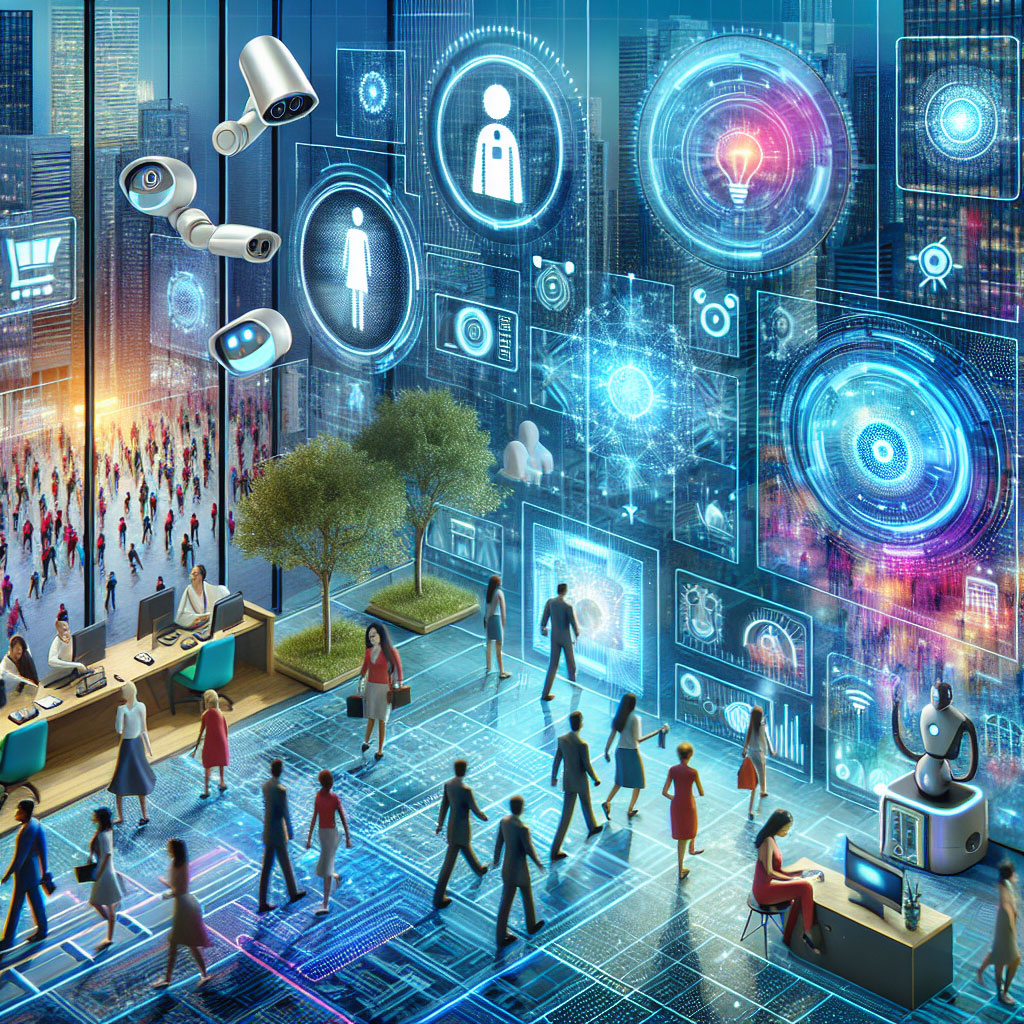
4 AI Trends to Invest in for 2023

If 2022 taught us anything, it’s that we live in uncertain times. Enterprises in all industries continue to struggle to escape the negative effects of soaring inflation rates, supply chain issues, and a possible recession. As we enter the new year, organizations must overcome these uncontrollable conditions by focusing on what they can control: their digital initiatives.
It’s important for organizations to stay on top of the latest technological trends with a particular focus on time-to-market—both keys to staying ahead of competition. But knowing where to invest will always be the first step. With the growing possibilities of artificial intelligence (AI) and its market size projected to grow from $387.45 billion in 2022 to $1394.30 billion in 2029, we think that’s a pretty great place to start. We have identified 4 of the most promising AI concepts for propelling digital transformation and achieving meaningful competitive advantage in 2023.
1. AI TRiSM (Trust, Risk and, Security Management)
Trust is a concern when it comes to implementing AI. The question at the forefront, “How can AI be trusted to make serious decisions?” This is where and why AI trust, risk, and security management (TRiSM) will play a bigger role for many organizations moving forward. In fact, Gartner anticipates that by 2026, organizations operationalizing AI TRiSM will attain a 50% improvement of adoption, business goals, and user acceptance.
A recent survey by Deloitte demonstrated customer concerns in relation to AI technologies that reduce trust in AI:
- Biases – Customers have biases against the technology
- Lack of accountability – Lack of human oversight for AI decisions
- Unanticipated behavior – Customers are worried about AI going rogue
- Complexity – Lack of understanding of how AI/algorithms work
TRiSM ensures AI model governance, trustworthiness, fairness, reliability, robustness, efficacy, and data protection. This includes solutions and techniques for model interpretability and explainability, AI data protection, model operations, and adversarial attack resistance.
Currently, AI regulations are on the rise. However, preceding any mandates, it’s important for organizations to implement AI TRiSM procedures and have practices in place to establish a sense of trust and transparency with customers.
2. Platform Engineering
Why is platform engineering trending for 2023? It aids software delivery for digital transformation and enhances the developer experience. From a customer standpoint, accelerated application delivery allows them to realize business value more rapidly. Providing reusable services, components, and tools for application delivery are so important that by 2026, Gartner believes 80% of software engineering organizations will have platform teams as internal providers.
Competitive advantages driving adoption of platform engineering include:
- With the development of new tools, platforms can be easier to build and maintain
- Developer productivity can increase
- Platforms fit with team’s preferred workflow
- Developers can still produce valuable software with as little expense as possible
- Platform engineering increases cooperation between software developers and operators
3. Adaptive AI
Unlike traditional AI, adaptive AI uses real-time feedback to adjust for real-world changes, new data, and modified goals by revising its code post-deployment. Adaptive AI’s ability to react more effectively to disruptions results in a better user experience, faster deliveries, and better business outcomes. According to Gartner, enterprises that adopt adaptive AI will outperform others in their industry by at least 25% in relation to the number and time to operationalize AI by 2026.
A requirement for adaptive AI is strengthening the change management aspect of AI engineering efforts. The effort to reengineer systems can be time consuming, impacting the business, employees, and technology partners.
4. Sustainable technology
C-suite execs face pressure to have green initiatives from government regulations, investors, regulators, and employees. By 2025, Gartner believes 50% of CIOs will have metrics tied to the sustainability of IT. Sustainable technology is a framework of digital solutions that can enable environmental, social, and governance (ESG) outcomes for the enterprise and its customers. Combined, ESG represents the sustainable and ethical impact of a business investment. Sustainable technology is about developing a design and engineering process with the idea of environmental issues in mind.
For example, Fairphone was founded on the notion that the most sustainable phone will always be the one that’s in your pocket. And so, the Fairphone 3+ was designed to be durable and easy to repair. Users can easily and affordably repair broken parts, replace cracked screens, and even upgrade batteries. By extending a phone’s lifetime by 2-3 years, Fairphone can reduce greenhouse gas emissions by 30% per year, according to Life Cycle Analysis.
Benefits of embracing sustainable technology:
- Increased business output – Renewable energies reduce risk of power outages, driving more efficient operations
- Talent attraction – Companies that market their sustainability initiatives can often attract talent whose goals align with effecting positive change
- Customer attraction – Smart marketing can attract customers; The support of environmentally conscious consumers can boost revenue
- Social responsibility – Leaders can encourage the use of sustainable technology effecting change
Furthermore, sustainable technology creates opportunities in internal IT operations, enterprise operations, and customer operations to move towards better ESG outcomes for not only themselves, but for their customers with the respective products or services they deliver. Operational efficiency includes increased output with minimal resources, a push towards energy efficiency, better labor practices, and reduced emissions.
AI: A Safe Investment for 2023
When discussing fashion or entertainment, trends are typically fleeting. Occasionally, the same can be true with technology—remember Google Glass? No? Exactly. But for years, AI has continued to deepen its roots within the digital space thanks to increased data volumes, sophisticated algorithms, and improved computing power. What’s more is the evidence supporting its promising future. Gartner forecasts by 2028, AI-driven machines will make up 20% of the global workforce and 40% of economic productivity.
The 4 trends mentioned above offer a glimpse into what we can expect from AI technology in 2023. Once adopted, these AI concepts are capable of maturing digital transformation efforts while bringing organizations closer to their goals and further ahead of their competition.
Apexon’s expert consulting services help enterprises to support their digital initiatives across various aspects of their businesses, including engineering, talent, and governance. Check out Apexon’s Data Analytics and AI/ML services or get in touch with us directly using the form below.




